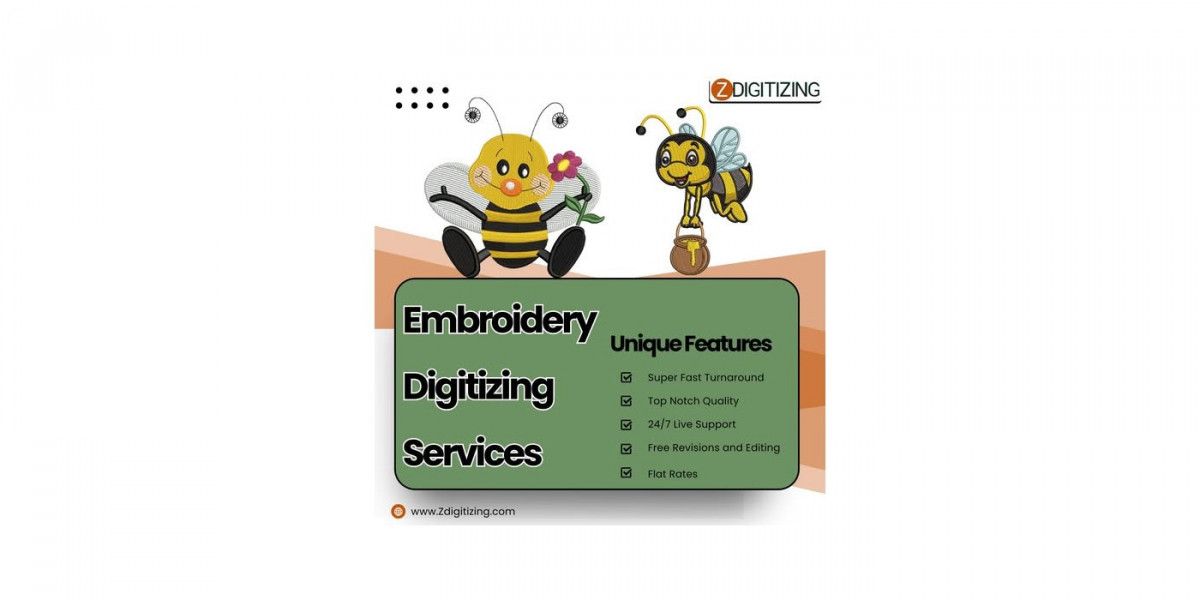Embroidery has long been valued for its durability, texture, and professional appearance. It remains a preferred decoration method for apparel, accessories, and promotional products because it delivers a polished and long-lasting finish. However, producing high-quality embroidery involves more than placing a design on a machine. The first and most important step is embroidery digitizing, a process that converts artwork into a stitch-ready file.
Digitizing determines how an embroidery machine interprets a design, how the needle moves, and how each section is stitched. With the growing demand for customized products, digitizing has become an essential component of modern embroidery workflows for both small and large operations.
What Is Embroidery Digitizing?
Embroidery digitizing is a specialized blend of technical skill and design knowledge. A digitizer uses professional software to recreate artwork using stitches instead of pixels. Every part of the design, stitch type, direction, density, underlay, and stitch sequence is planned with precision.
It is important to note that a standard graphic file, such as a PNG or vector image, cannot be stitched by an embroidery machine on its own. It must be converted into a machine-readable format through careful digitizing.
A well-prepared embroidery file helps ensure:
- Clear edges and defined details
- Fewer thread breaks during production
- Smooth scaling across different sizes
- Consistent movement of the embroidery machine
- Balanced texture and reliable stitch density
When digitizing is handled correctly, the embroidery machine can run efficiently, producing clean and repeatable results.
Why Embroidery Digitizing Matters
Digitizing directly affects the quality of the finished embroidery. Even the most advanced embroidery machines rely exclusively on the information contained in the stitch file. If the digitizing process is weak, issues such as distortion, gaps, puckering, or uneven surfaces may occur.
Professional digitizers consider several factors, including fabric behavior, thread weight, detail level, and how the design will be used. They understand how each stitch interacts with the material and adjust the design to ensure stability.
Key advantages of using a skilled digitizer include:
- Accurate translation of artwork into stitches
- Controlled stitch count for efficient production
- Adjustments tailored to different fabric types
- Consistency across multiple items or batches
- Compatibility with common embroidery formats such as DST, PES, and EXP
This expertise ensures that the final embroidered result is clean, balanced, and aligned with the original artwork.
Common Applications of Embroidery Digitizing
Embroidery digitizing is used across many industries and creative projects. Whether for commercial use or personal customization, digitizing ensures the artwork stitches correctly on a wide range of fabrics and items.
Popular applications include:
- Corporate logos for apparel, hats, and accessories
- Fashion and apparel decoration for custom designs
- Sports uniforms, patches, and team branding
- Personalized items such as monograms and initials
- Home décor items, including linens and decorative textiles
Digitizing helps adapt artwork to different surfaces, materials, and stitch types, ensuring reliable results on cotton, polyester, fleece, leather, and specialty fabrics.
What Defines High-Quality Digitizing?
Several technical elements influence how a digitized design will stitch. Understanding these factors highlights the importance of professional expertise.
Important components of quality digitizing include:
- Stitch Selection: Using satin, fill, and running stitches strategically to create detail and smooth texture.
- Underlay: Building structure beneath the top stitches to reduce distortion and support the design.
- Density Adjustments: Ensuring the right balance between coverage and flexibility.
- Pull Compensation: Preventing fabric distortion by anticipating how materials will move during stitching.
- Pathing: Planning the stitch order to reduce unnecessary jumps, trims, and machine downtime.
Each of these factors directly affects the durability and appearance of the finished embroidery.
Choosing an Embroidery Digitizing Service
Selecting the right digitizing provider, like ZDigitizing, can significantly improve the outcome of your embroidery projects. A reliable service should demonstrate technical understanding, artistic skill, and attention to detail.
Key considerations include:
- Professional experience and sample work
- Turnaround times that align with your workflow
- Availability of required file formats
- Clear communication and responsiveness
- Options for revisions when needed
A dependable digitizing partner helps ensure that designs stitch smoothly, maintain clarity, and meet production expectations.
The Growth of Embroidery Digitizing
As customization continues to grow in both personal and commercial markets, embroidery digitizing plays an increasingly important role. Modern software offers more precision, while experienced digitizers provide the judgment and creativity required for complex designs.
Digitizing bridges the gap between digital artwork and embroidered products. Whether used for branding, fashion, personalized gifts, or décor, this process ensures accuracy and consistency from the initial concept to the stitched result.
Final Thoughts
Embroidery digitizing is the foundation of every successful embroidered project. It influences how the needle moves, how the thread layers on the fabric, and how well the design holds up over time. When handled by skilled professionals, digitizing ensures that artwork is interpreted correctly and prepared for clean, reliable stitching.








